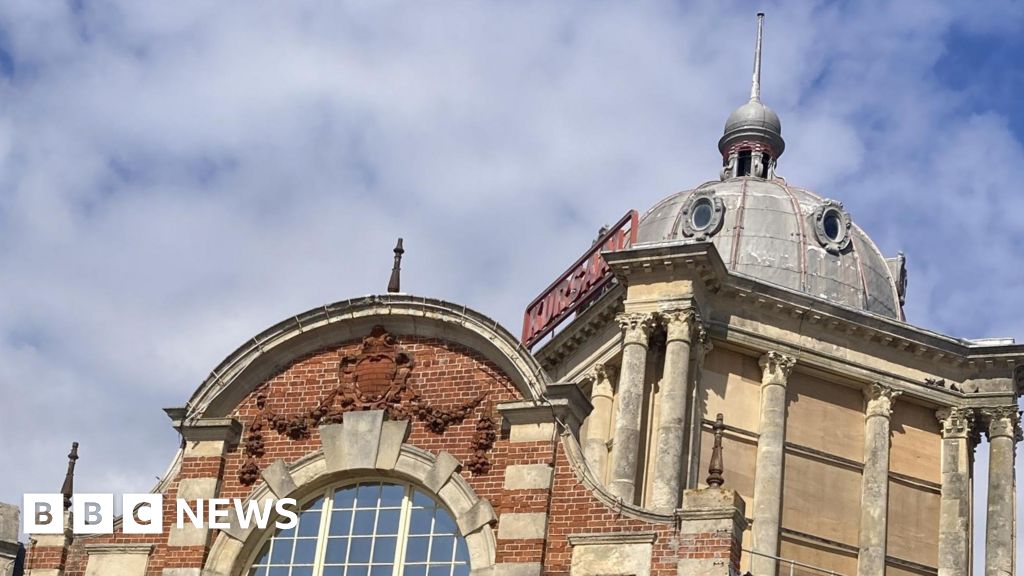An amusement park, a Gothic seaside mansion, one of the world’s first tennis pavilions and a former boarding school have been named as some of the most endangered Victorian buildings in the country.
The 10 places on the list, compiled each year by the Victorian Society, are those which the charity believes are most in need of saving.
All are listed at least Grade II, indicating their historical or architectural importance.
Their listed status means the structures are already subject to protection, but the society has warned that the regulations may not be enough without further action.
Victorian Society president Griff Rhys-Jones called on people to stand up for the buildings.
“Look at the character shown here. They all add color and story to any urban landscape,” he said.
“Their restoration and reuse makes great commercial sense. They are attractions in themselves. They are already destinations. They should be a part of local pride.
“What do we want? Parking? A faceless block in their place? Lots of new carbon pollution?
“When they already have so much color, continuity and history on their side?”
The 10 at-risk Victorian buildings on the 2024 list are:
- Kennington Boys’ School, London
- Kursaal, Essex
- St Martins (formerly Roslyn Hoe), Devon
- St Luke’s Chapel at Nottingham City Hospital, Nottinghamshire
- St Agnes’ Vicarage and Hall, Liverpool
- Chances Glassworks, West Midlands
- Former Education Department Offices, Derbyshire
- Former Bramcote Tennis Pavilion, North Yorkshire
- Jesmond Dene Banqueting Hall, Newcastle
- Coal Exchange, Cardiff
Kennington School for Boys, Lambeth
Described in Historic England as “a large symmetrical building of seven bays”, Kennington Boys’ School was built in 1912 by TJ Bailey.
It has “composite roofs including stars”, red brick, stone and terra cotta cladding, varied windows and “wall enrichment”.
The building later became home to the Charles Edward Brooke School for Girls until it moved.
The water that entered the building caused significant internal damage and the future occupant has not been identified.
Kursaal, Southend-on-Sea
The Kursaal in Southend-on-Sea, Essex, opened in 1901 and is believed to be the world’s first purpose-built amusement park.
A circus, ballroom, arcade, dining hall, billiards room, petting zoo and ice rink were available for the public to enjoy before it fell into permanent decline.
Designed by architect George Sherrin, the site is now occupied by Tesco Express.
St Martins, Ilfracombe
St Martins in Torrs Park was built in the Gothic style by WM Robbins of Ilfracombe, North Devon.
It was included in the list for the first time in 1994.
The year 1880 is written on the plaque above the entrance, and it was first mentioned in the 1881 census.
It served as a school for girls since 1885.
Formerly known as the Roslyn Hoe, it became a small hotel by the 1930s.
The house was described by a local architect as an “exercise in symmetry”.
St Luke’s Chapel at Nottingham City Hospital
image source, Paul Tarry via Historic England
St Luke’s Chapel was probably completed in September 1902 and was originally a private chapel for the use of the prisoners and staff of the Nottingham Workhouse.
The site of the workhouse became the site of Nottingham City Hospital and the chapel remained open to workers and patients, closing when the new one opened.
After that, it served as a hospital warehouse.
St Agnes’ Vicarage and Hall, Liverpool
The vicarage at the rear of St Agnes Church in Greenbank, Liverpool was built in 1887 by Norman Shaw.
It is recognizable by its stone columns, slanted windows and recessed entrance.
Chances Glassworks, West Midlands
Chances Glassworks in Smethwick was established in the early 19th century and produced window, optical and specialist glass – including window glass for the Houses of Parliament.
Significant areas of archaeological remains are known to exist within the site, including the bases of up to six kilns and the main tunnels and chimneys, potentially representing the most extensive area of surviving Victorian glass production in the country.
Former Department of Education Offices, Derby
image source, Mark Somerfield via Historic England
The former Derby Department of Education office was built in the Renaissance style in 1893.
With molded architraves with pilasters and a truncated pyramidal roof covered with iron ornaments, the roof of the building is now decaying.
Bramcote Tennis Pavilion, Scarborough
The former Bramcote Tennis Pavilion, built in Scarborough in 1885, is listed of Community and Architectural Interest.
Described as a “charming” Arts and Crafts-influenced building, it is also “an especially fine example of a sports building-style verandah bungalow that epitomizes the late Victorian and Edwardian period”.
And because it has locker rooms for both sexes, the building illustrates “a particularly significant socio-historical aspect” of the sport.
Jesmond Dene Banqueting Hall, Newcastle
The Jesmond Dene Banqueting Hall in Newcastle, which originally had a water-powered organ, was built by John Dobson in 1860 for Lord William Armstrong.
Lord Armstrong wanted a hall large enough to entertain his many guests, both VIPs from around the world and his workers.
It was subsequently extended by Norman Shaw in the following decade with a portico, reception hall and showroom.
The hall was last used for events in the 1970s and has been earmarked for restoration by the Tyne & Wear Building Preservation Trust.
Coal Exchange, Cardiff
The first recorded million-pound deal was made on the coal exchange.
The Stock Exchange closed in 1958, but the impressive early 20th century architecture and interiors remain, reflecting Cardiff’s important position in the coal trade.
It previously operated as a music venue but was declared unsafe and in imminent danger of collapse by Cardiff Council in 2013.
It reopened in March this year as a hotel.
